Traditional Tie-Dye Products of Buyi Ethnic Group in Guizhou Popular Among Tourists
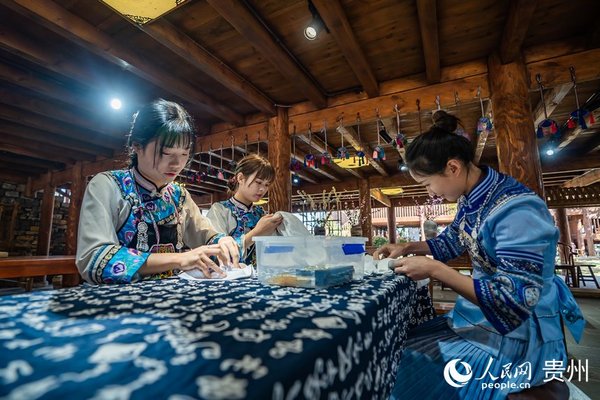 |
| Some young women of the Buyi ethnic group make tie-dye products at the Wanfenglin scenic spot, Xingyi City, southwest China's Guizhou Province. [People's Daily Online/Tu Min] |
Some young women of the Buyi ethnic group made tie-dye products for visitors to the Wanfenglin scenic spot, Xingyi City, southwest China's Guizhou Province on March 9, 2022. Integrating traditional craftsmanship and a modern taste, these products are much beloved by visitors to the area. During the holidays, many tourists come here to experience the process for making the tie-dye products.
Tie-dyeing is one of the dyeing techniques of the Buyi ethnic group. The process includes a series of steps such as folding or crumpling fabric and first tying it with strings, then dyeing the fabric with a natural pigment extracted from the fresh leaves of indigo plants, and finally untying the fabric. There are hundreds of ways to tie the fabric, which can result in numerous different patterns.
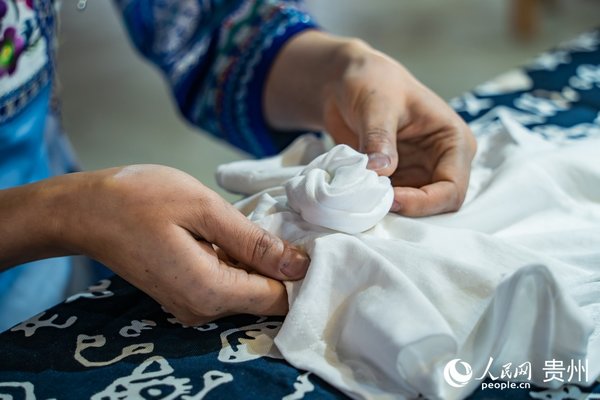 |
| A young woman of the Buyi ethnic group makes tie-dye products at the Wanfenglin scenic spot, Xingyi City, southwest China's Guizhou Province. [People's Daily Online/Tu Min] |
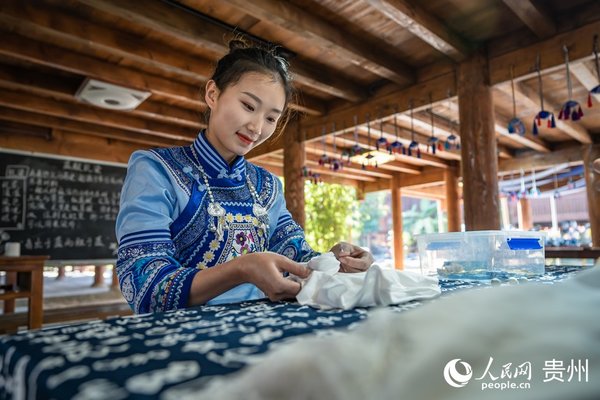 |
| A young woman of the Buyi ethnic group makes tie-dye products at the Wanfenglin scenic spot, Xingyi City, southwest China's Guizhou Province. [People's Daily Online/Tu Min] |
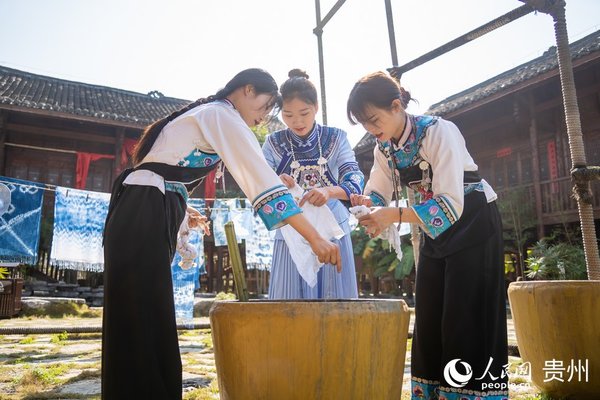 |
| During one step of the tie-dyeing process, the dyed cloth is washed in clean water. [People's Daily Online/Tu Min] |
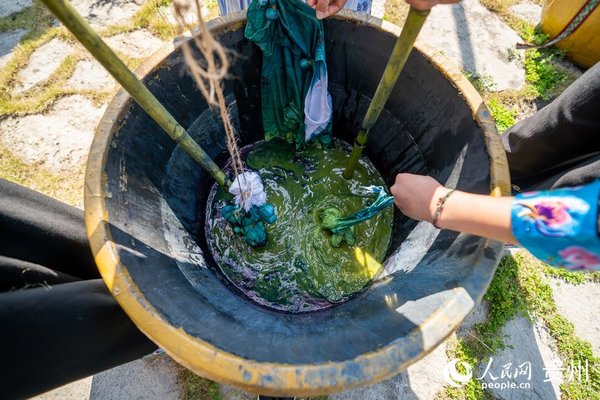 |
| After being folded and tied up, the cloth is dyed with a natural pigment extracted from the fresh leaves of indigo plants. [People's Daily Online/Tu Min] |
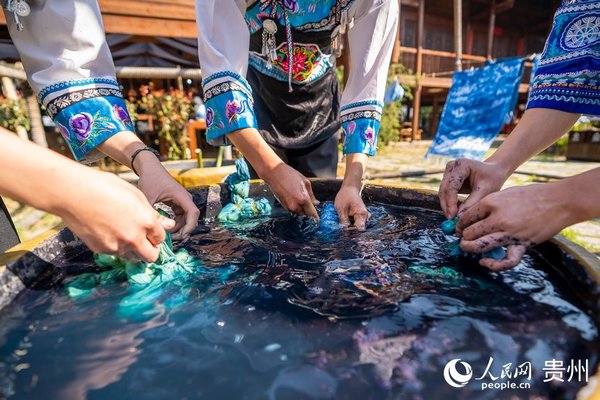 |
| During one step of the tie-dyeing process, the dyed cloth is washed in clean water. [People's Daily Online/Tu Min] |
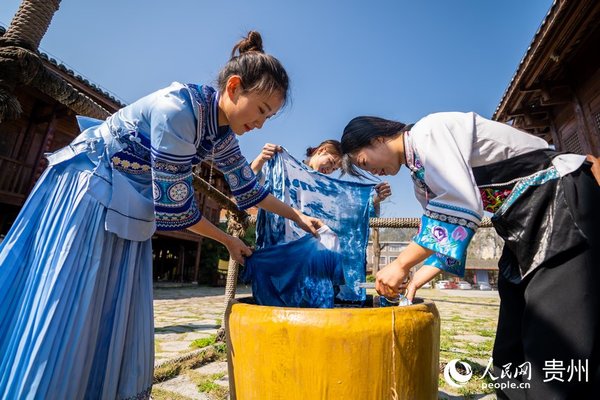 |
| Some young women of the Buyi ethnic group check on the dyed cloth. [People's Daily Online/Tu Min] |
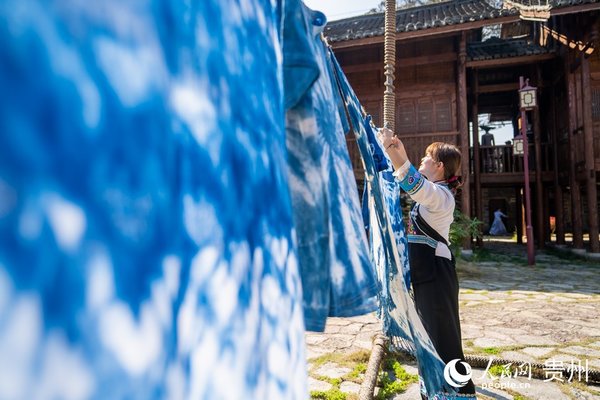 |
| A young woman of the Buyi ethnic group hangs the freshly dyed cloth to dry. [People's Daily Online/Tu Min] |
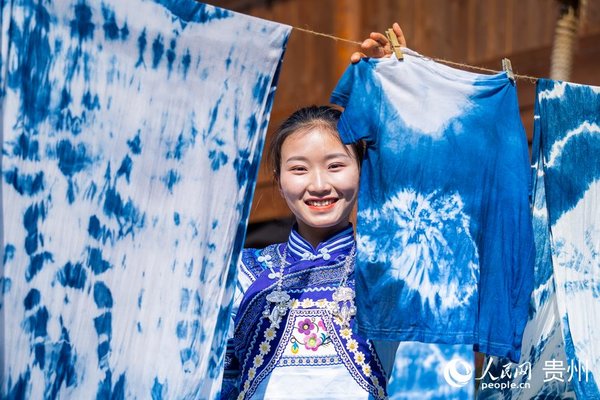 |
| A young woman of the Buyi ethnic group hangs the freshly dyed cloth to dry. [People's Daily Online/Tu Min] |
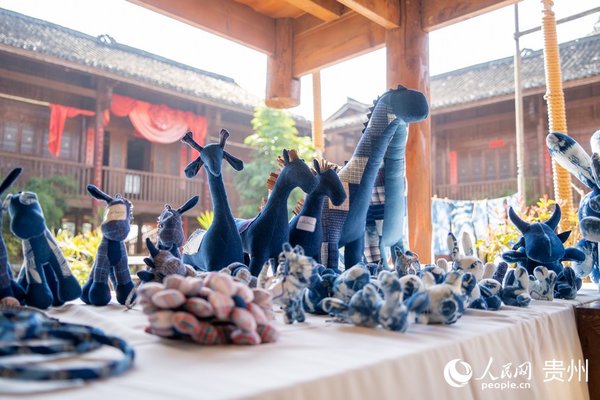 |
| Photo shows some tie-dye products of the Buyi ethnic group. [People's Daily Online/Tu Min] |
 |
| Photo shows some tie-dye products of the Buyi ethnic group. [People's Daily Online/Tu Min] |
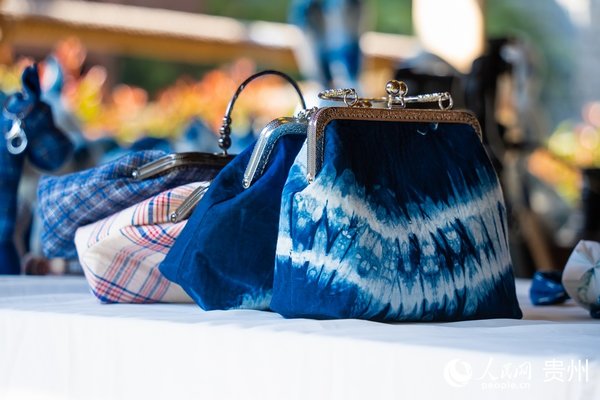 |
| Photo shows some tie-dye products of the Buyi ethnic group. [People's Daily Online/Tu Min] |
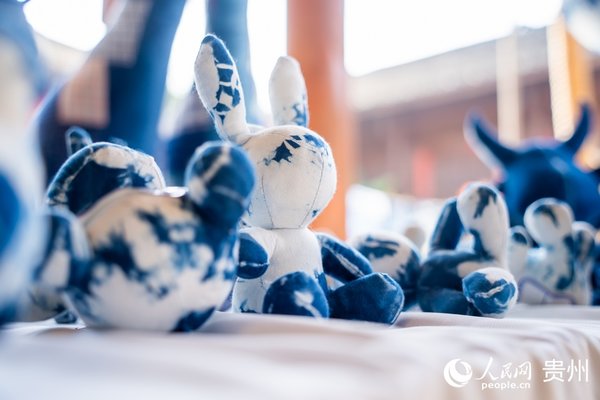 |
| Photo shows some tie-dye products of the Buyi ethnic group. [People's Daily Online/Tu Min] |
(Source: People's Daily Online)
Please understand that womenofchina.cn,a non-profit, information-communication website, cannot reach every writer before using articles and images. For copyright issues, please contact us by emailing: website@womenofchina.cn. The articles published and opinions expressed on this website represent the opinions of writers and are not necessarily shared by womenofchina.cn.


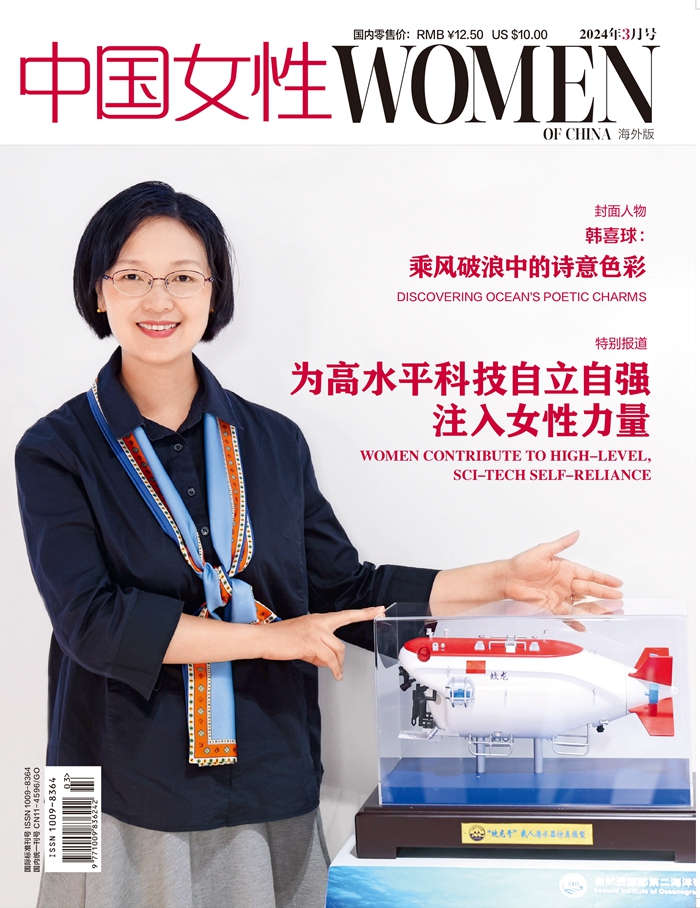
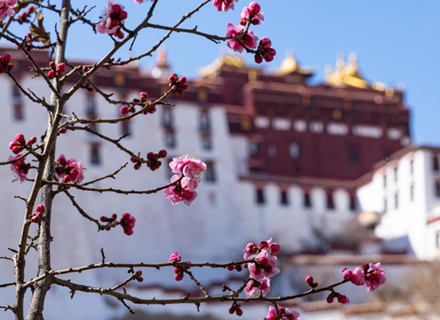
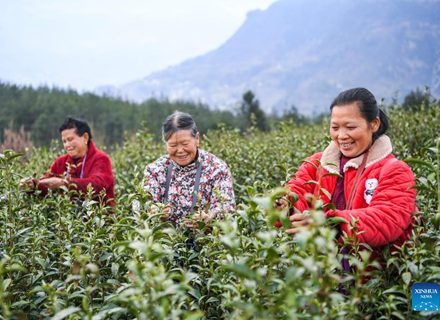


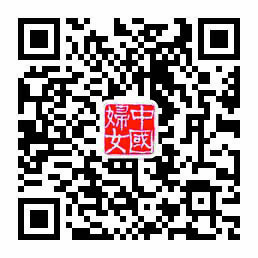 WeChat
WeChat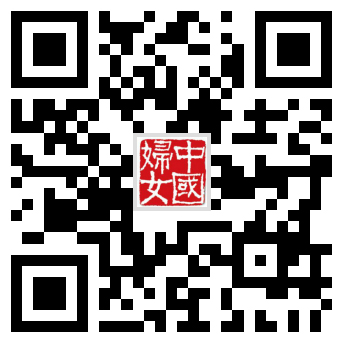 Weibo
Weibo 京公网安备 11010102004314号
京公网安备 11010102004314号